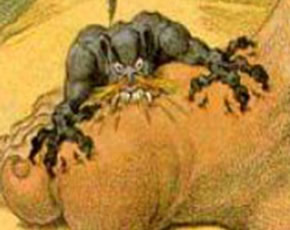
Gout
Despite being used for decades as a primary treatment for acute gout, optimal colchicine dosing has not been systematically evaluated. This is potentially important, as higher doses of colchicine can frequently be associated with the undesired consequence of severe diarrhea and gastrointestinal distress. Here, Terkeltaub et al (Arthritis Rheum 2010; 62(4): 1060) explore different dosing strategies for colchicine in the first randomized, blinded, placebo controlled trial, named AGREE (Acute Gout Flare Receiving Colchicine Evaluation)
Methods
Adult men and postmenopausal women with confirmed gout and a history of frequent flares were randomized to one of three treatment groups:
- low dose colchicine- 1.2 mg followed by 0.6 mg in one hour (followed by placebo doses on subsequent hours): total dose=1.8 mg
- high dose colchicine – 1.2 mg followed by 0.6 mg per hour for 5 hours: total dose 4.8 mg
- all placebo
Participants were enrolled at 54 centers in the U.S. in 2007-2008. Patients used supplied study medications within 12 hours of the onset of flare symptoms, with symptoms monitored in a diary. Post-flare study visits were planned for within 48 hours of flare onset. The primary endpoint was the proportion of patients with a 50% or greater reduction in pain within 24 hours of study drug.
Results
Among the 575 randomized patients, 185 had a gout flare and used the study medication. There were 52 (28%) in the high dose group, 74 (40%) in the low dose group, and 59 (32%) in the placebo group. Mean age was 52 years, with the majority of participants being male (95%), Caucasian (83%), with longstanding gout. Tophi were uncommon (9%). Despite a mean serum urate concentration of 8.8 mg/dl, less than a third were receiving urate lowering therapy.
| Table. Efficacy Outcomes According to Treatment Allocation | |||||
|
High Dose |
Low Dose |
Placebo |
p-value high dose vs. placebo |
p-value |
|
| 50% reduction in pain at 24 hours |
33% |
38% |
16% |
0.034 |
0.005 |
| ≥ 50% reduction in pain at 32 hours |
37% |
42% |
17% |
0.022 |
0.002 |
| ≥ 2 unit reduction in pain at 24 hours |
35% |
43% |
17% |
0.037 |
0.002 |
| ≥ 2 unit reduction in pain at 32 hours |
39% |
46% |
17% |
0.012 |
0.001 |
Rescue medications were used significantly less frequently in the colchicine groups, and did not differ by low-dose vs. high-dose allocation.
For safety, there were no serious adverse events. Diarrhea was observed in 77% of high dose colchicine treated patients compared to 23% of low-dose and 14% of placebo treated patients. Severe diarrhea was observed in 19% of high dose patients, compared to none in the other groups. Vomiting was only observed in the high dose colchicine group. These differences were all statistically significant.
Conclusions
Low dose colchicine was as efficacious as high dose in relieving the pain of recurrent gout flares with a more favorable side effect profile.
Editorial Comment
Colchicine has been widely used to treat acute gout for decades, yet its usage has been based primarily on style than hard data. This study definitively supports the use of this low dose regimen over higher doses. Even with higher doses, more than 60% of patients did not have at least a 50% reduction in the their symptoms in the first 24-32 hours. This suggests that chronic urate lowering, rather than flare management, should be the focus of care in patients with frequent attacks, a modality that was absent in many of these patients. Whether other treatments for acute gout (i.e. NSAIDs or glucocorticoids) are superior to this regimen has not been studied.



